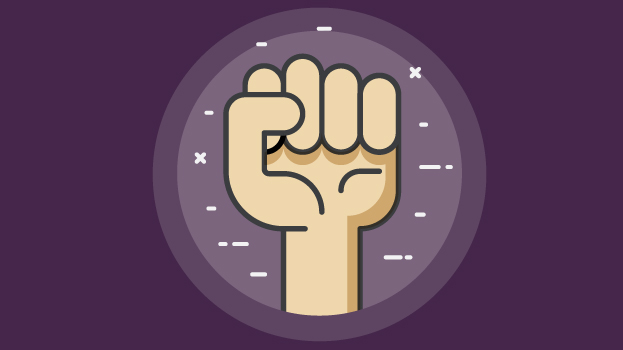As we continue to navigate the ongoing COVID-19 pandemic, building resilience is quickly becoming one of the most important skills one can cultivate.
In times of crisis and of uncertainty such as these, businesses big and small must remain agile and proactive in their decision-making to ensure long term business continuity and recovery. But how does one do that?
To equip business leaders with the tools to bounce back (or perhaps bounce “forward”), we share 4 actions to take to not only react, but also reshape your business and plan for the future.
1. Put People First
People are at the centre of your business, and consequently, remain its best asset. Recruiting and training top staff as well as teaching and imparting them extensive company knowledge is an expensive and tedious task, and most importantly, takes years to foster.
Hence, it should come as no surprise that ensuring your current team’s safety and wellbeing is of the utmost importance to keep them engaged so as to ascertain business continuity.
And although it may seem like a staggering effort, there are a few key high impact measures you can set up now to future proof employee engagement.
First off, start with ensuring your staff’s physical wellbeing by providing infection protection measures for onsite workers. Depending on the nature of your business or even your industry, this might take shape through:
– The distribution of free hand-sanitisers and personal face masks
– Setting clear guidelines for respecting social distancing
– Organising home pick-ups for employees to help them avoid taking public transport, etc.
Then, should you already have one, make adjustments to your remote working policy to allow people to work safely. If you do not currently have such a policy in place, now is the time to create one.
Although flexibility at work is not a new concept, orchestrating remote working measures for your entire workforce is definitely going to be an adjustment for most. Since there are high chances that semi-permanent remote working arrangements become part of the “new norm”, now is the time to figure out and plan what that looks like for your business in the long run.
If you do not have the know-how or the time to craft a comprehensive policy, you can outsource this to a 3rd party. Now is not the time to try and fudge something quickly as a temporary band-aid, as this could have long term legal repercussions for your business.
And finally, make sure to issue regular and transparent communication to reassure your employees. Keeping them in the loop on what measures your business is taking to keep them safe will go a long way in cultivating their trust. We cannot stress this enough.
We know fluid communication is key in keeping employees engaged. Yet now more than ever, is the time to make it a two-way street. Garnering feedback and ideas directly from your staff will have significant positive impacts on building long term business resilience.
More specifically, by giving a voice to your staff, you’ll open up a dialogue and make room for new ideas, which in turn will diversify your business’s possible new strategy options.
2. Adapt Your Strategy
The COVID-19 crisis has forced businesses all over the world to rethink their original business model, pushing them to innovate so as to ride the wave of uncertainty.
The only certainty is that today’s reality will be very different to tomorrow’s, so reviewing your business model and looking at how to adapt and become as agile as possible for the long term is crucial to successfully “bouncing forward”.
True business agility is hard to master, but in this case, the most important things you can do for your business is remain informed, educate yourself, be open-minded to diverse ideas and not be afraid of trying something new.
In other words, the more prepared you are to face and address challenges, the easier it will be to overcome them. The more open-minded you are to trying new things for your business, pivoting your original strategy or finding a new niche, the more chances you have of surviving. And finally, the more you remember to keep a long-term perspective, the better chances you have of thriving.
Actions to take to help you adapt your strategy include…
Reviewing your Finances to Better Plan
The first step to adapting a strategy is determining what is financially viable or not. Not only will this inform which decisions you can make or opportunities you can pursue, but it will also clarify potential timelines in which you can act.
Actions to take include:
– Evaluating your short-term liquidity (aka “cash is king”)
– Assessing your financial and operational risks so as to respond quickly
– Determining how the crisis will affect (or has affected) your budget & business plans
– Cataloging sources of cash available
– Articulating & stress testing economic scenarios
– Monitoring domestic and foreign government initiatives of support to establish if your business is eligible for extra help in the short term
Planning for the Long Term
When it comes to adapting your strategy, it is essential to think of the long term.
Periods of volatility can create opportunities that your businesses can leverage if properly prepared. Yet, in times of crisis, most go into “survival mode” and forget to think long term.
In order to promote resilience within your business, we recommend:
– Striking the right balance between short- and long-term strategies by investing comprehensively in the future. This means that cost cutting should not be done with a short-term mindset and that goals should be reviewed regularly to make sure they’re still valid.
– Questioning your usual operating model and taking this opportunity to review how you operate long term.
COVID-19 is likely to accelerate fundamental and structural changes that were inevitable in any case, but are now likely to occur far faster than they would have otherwise. As such, anticipating their lasting effects on your business is crucial so as to plan accordingly.
For instance, if you are looking to embrace a more decentralised work model, it’s important to consider investing in management training, collaboration tools and communication policies to run a more distributed workforce.
Aiming for Speed over Elegance
Perfect is the enemy of good during a crisis. Laws and safety measures are constantly changing, and businesses are expected to keep up. As such, we recommend:
– Creating a crisis management task force
Keeping up with changing laws and jurisdiction on top of everything else is tedious work. Communicating these changes in an efficient manner is harder still.
By creating an internal crisis response team, you are able to better manage the workload, making it easier to keep up.
This is also a great way to instill trust with your employees, as shows you’re putting every available asset towards managing the crisis.
We recommend dividing the work amongst several team members across different teams so as to keep things fair and operationally sound.
– Encouraging agility, collaboration and input
More specifically, encouraging more initiatives and decisions be made at all levels of your organisation. This means trusting that teams and individuals (who are deeply embedded in a specific context), are in the best position to come up with creative approaches to address unanticipated needs.
– Moving from central command to central orchestration
In line with the above point, effective collaboration across functions so as to maximise performance will be critical in the recovery phase of this crisis.
As such, a leader’s role should be amended to reflect this. For some businesses, this might be moving away from having heavy executive roles to more team leader roles.
– Making your business objectives clear, but allow more flexible local autonomy
This is especially important for global businesses. As the crisis will affect countries differently, it is of the utmost importance that local teams be given the jurisdiction to make and implement decisions based on their local realities so as to be more efficient.
Designing from the Heart… and the Head
And finally, more than ever, emotional intelligence is critical to building resilience. As such, we encourage adopting a calm and methodical approach to whatever comes next and doing so with empathy and compassion. This means:
– Addressing your staff as well as clients’ psychological stress and needs
on a regular basis. By being cool, calm and collected (or at least exuding that energy), you will be able to have much more of a positive impact on your stakeholders. This is important in both the short and long term to ascertain business continuity.
– Staying vigilantly focused on protecting financial performance
through the crisis and making hard, fact-based decisions. Now is not the time to make emotional decisions.
– Defining the non-negotiables
In other words, determining what services and employees are crucial for survival and which ones are not.
3. Create Open Lines Of Communication
As mentioned in our first point, fostering clear, transparent and timely communication is essential to recovery, especially when due to a global and public crisis.
Businesses spend a lot of money and time building their reputations, strengthening their relationships and instilling trust, so safe keeping those assets is of the utmost importance.
Whether your business is directly impacted or not, keeping an open line of communication with your stakeholders will go a long way in securing their ongoing support.
As such, once you have made sure your own people are taken care of and as you work on your updated strategy, it is imperative to simultaneously:
Keep customers informed of any impacts to product or service delivery
Regardless of if your business has been affected or not, it is important to reassure your clients that you will be able to continue serving them during this time.
If, for whatever reason, contractual obligations cannot be met as a result of supplier or production disruption, it is important to maintain open lines of communication to revisit timelines or invoke “force majeure” or “act of God” clauses.
Since this crisis is affecting people worldwide, proactive and honest communication will help mitigate disappointment and promote more understanding in both the short and long term.
Stay in contact with suppliers regarding their ability to deliver goods & services
Businesses will need to maintain regular contact with suppliers during the COVID-19 crisis so as to get a better understanding of their recovery plans and reach out to alternative suppliers if needed.
Remaining in constant contact will make sure that you can react quickly so as to not disrupt your customers / clients experience.
Reach out to partners to strengthen collaboration and business development
Your partners will most likely be in the same boat as you, so now is a great time to reach out to them to offer and seek assistance.
Not only will this strengthen your partnerships which will be of great importance during the recovery phase, but it will also create further opportunities for business development which is a win-win for both parties.
All in all, regardless of which stakeholder you’re speaking with, developing communication plans that balance caution with a business-as-usual mindset is of the utmost importance right now.
4. Plan for Recovery Now, Not Later
Once your business has stress-tested your finances, agreed upon a revised strategy and communicated any new directions with relevant stakeholders, the last step is to take action and be proactive when planning for the “new normal”.
Making decisions and taking action during the crisis with recovery in mind means:
Executing revised strategies & monitoring the situation
Brainstorming new ideas and coming up with new strategies is all good and well, but you’ll never know if these can come to fruition without actually putting them to the test.
As such, the most evident next step is to take action and monitor results on the go. Teams should be encouraged to share what works or not as quickly as possible so that the company may shift accordingly in a timely manner.
Re-evaluating & re-calibrating how to seize opportunities
Whilst trialing new strategies and finding your footing in this new reality, it is just as important to re-evaluate how quickly and how efficiently your business seizes new opportunities.
As mentioned several times throughout this article, we have no idea what the future holds. As such, making agility a priority for your business is what will determine your ability to thrive, rather than just survive.
By remaining open-minded and being able to react on the fly, your business will be able to keep ahead of competitors as well as remain relevant in this ever-changing world.
Prospects to keep an eye out for include, but aren’t restricted to:
– New booming industries to work with
– New needs that your product or service could serve
– New technology that could help you be more efficient
Reviewing & Renewing Business Continuity Plans (BCP)
Once the COVID-19 outbreak is controlled, it will be time to assess how your existing BCPs are working so as to review and renew them for the future.
If there are any deficiencies, whether it’s timeliness of action, lack of infrastructure, labour shortages, or external environmental issues, it will be important to identify root causes so as to shift accordingly.
By staying on top of your BCP now, you’ll be in the position to put new internal guidelines in place based on lessons learned, as well as solid contingency plans to build resilience and better respond to future crises.
The COVID-19 crisis was impossible to predict with conventional wisdom and forecasting tools. And even though we won’t yet know the true impacts it will have on our economy long term, what we can acknowledge is that it has pushed many to think outside the box.
Among the many lessons this crisis has taught us, one that businesses can carry forward long term is that building resilience and embracing agility is the way forward to thrive in the future.













 May 26, 2020
May 26, 2020 







